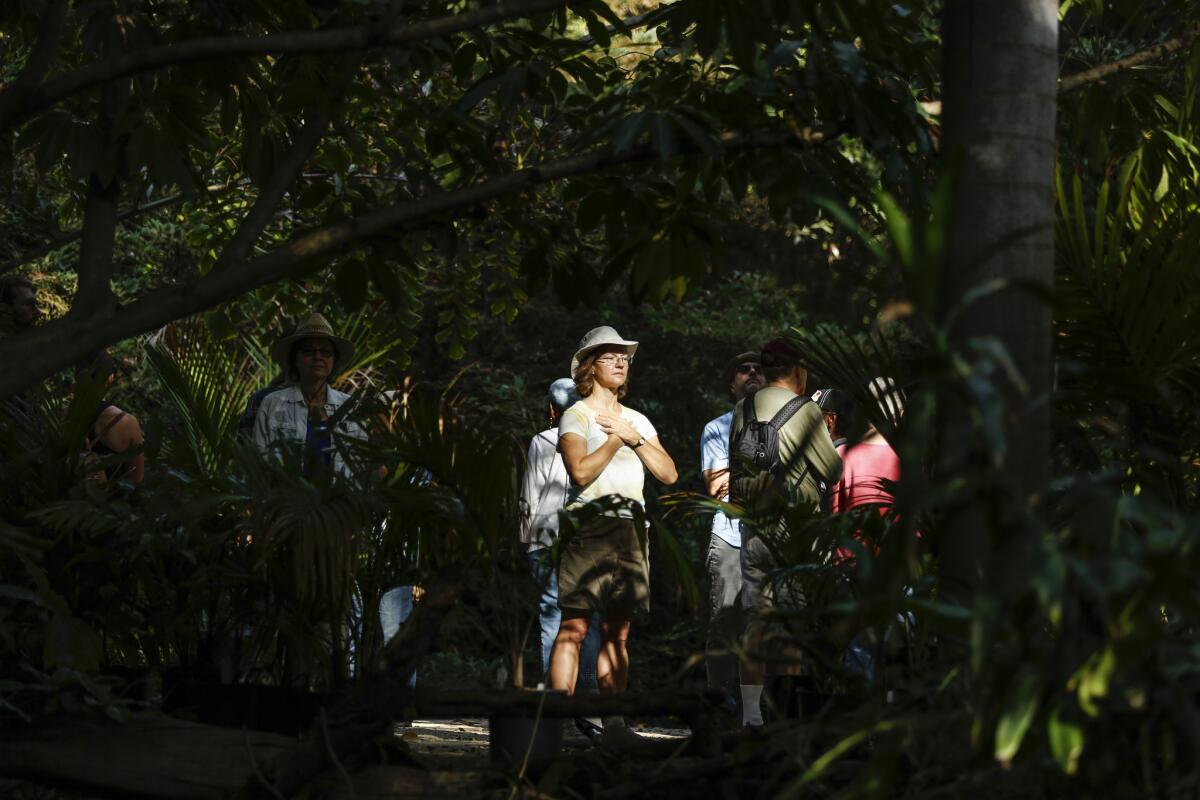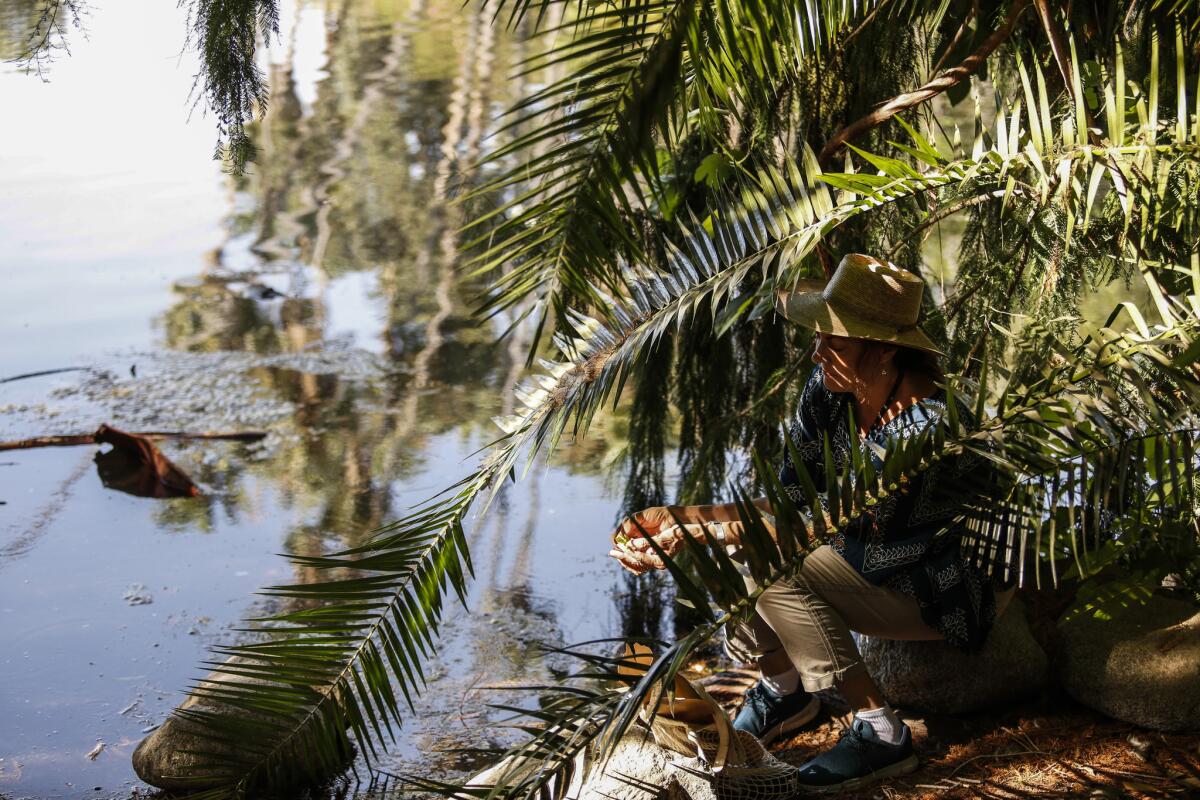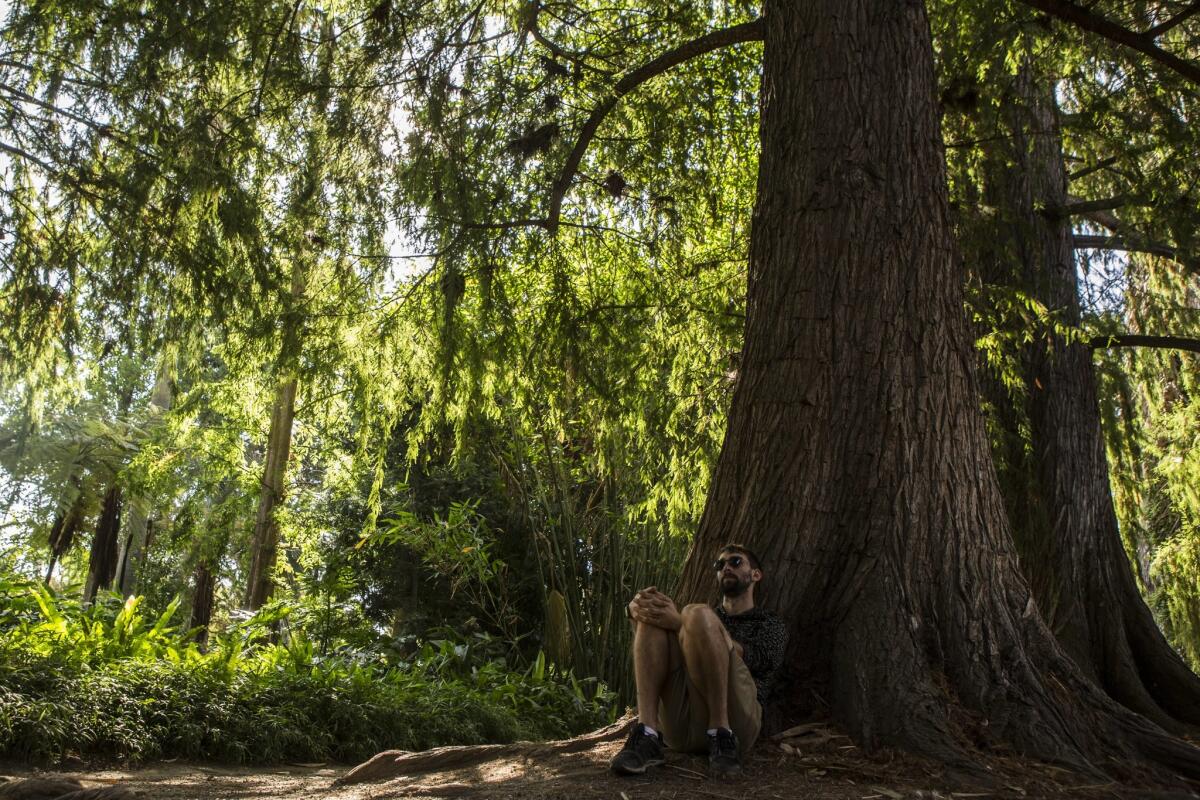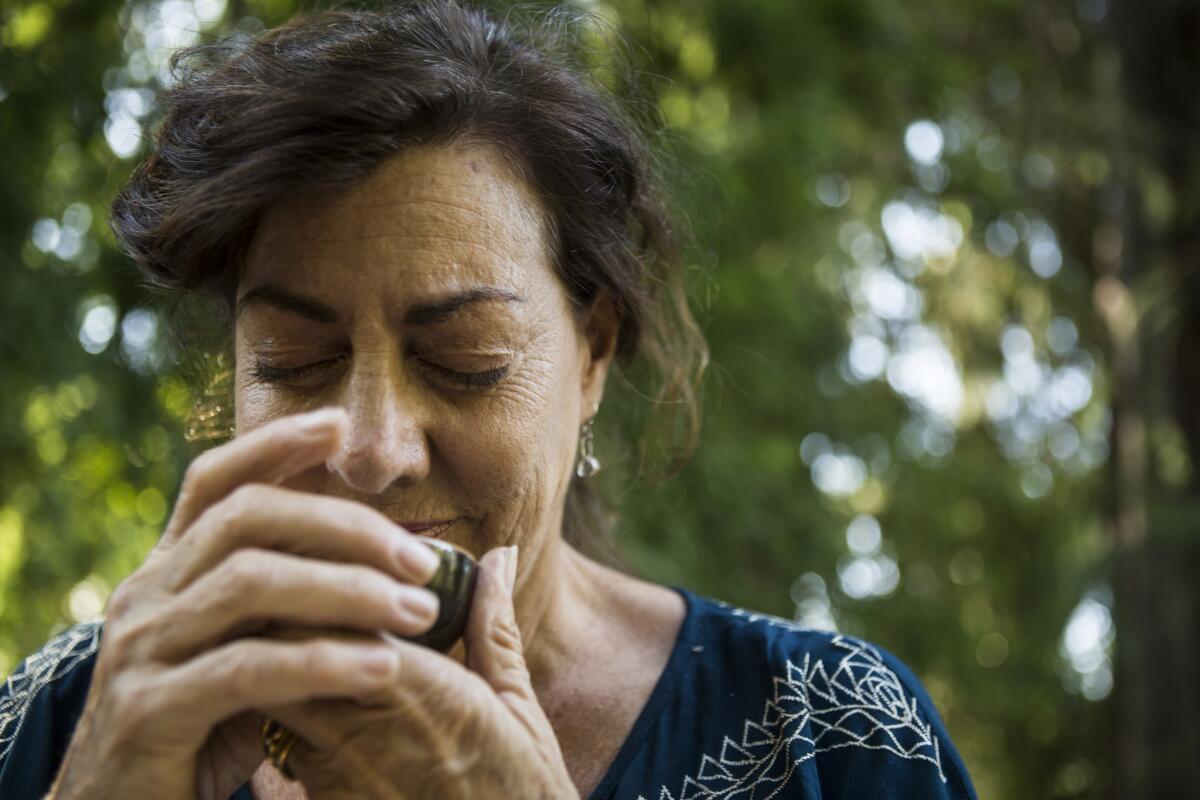What is forest bathing? Think hiking, but with an extra dose of reflection

- Share via
Ben Page led his class into the prehistoric forest: a shaded environment of towering redwoods and palm trees, bright orange birds of paradise and very curious ducks.
He told everyone to form a circle and be still, taking in the forest’s sounds, smells, even its taste.
One person noticed the chirping of songbirds. Another stared at the vibrant shades of green. One woman said she became so relaxed, she felt like she was shedding her first skin.
This is what happens during forest bathing, a class at the Los Angeles County Arboretum and Botanic Garden. Every first and third Saturday morning through Dec. 15, certified forest therapy guides take groups away from the traffic to connect with the trees.
“Forest bathing” does not involve soap or rubber ducks, but it is an adaptation of the Japanese practice shinrin-yoku, which translates to forest bath, or taking a relaxed walk through nature. The Japanese government has recognized the practice since 1982 as a scientifically proven way to reduce stress, improve mood and even boost the immune system.
“This is this moment of coming back home that all across the world people are feeling: this pull to come back to the forest,” Page said.


Page’s two-hour forest bathing class on a recent Saturday followed a format but felt laid back. He invited the group of nine to take a few minutes to explore the forest independently. They might stand in one spot with their eyes closed, hang out by a tree or touch objects they usually pass by: bark, leaves, petals, feathers.
Then he summoned them back with an uncannily convincing coyote call for council, where they were welcome to share with the group what they observed on their own, be it the smell of sage or the way the sunlight shone through gaps in the trees.
He repeated this routine a few times until the class was over.
Page said he was introduced to forest therapy by his mentor, Amos Clifford, who founded an association of forest therapy guides in 2013. Clifford once told Page to close his eyes and led him to a cypress tree. When Page opened his eyes, he looked at the tree in a new way.
“I remember it was this moment of awakening — because maybe I had never seen a tree before,” he said jokingly.
“You’re really looking at it and you’re saying, ‘There’s just so much here, there’s so much I’ve been missing. How have I been alive for so long and yet this tree is kind of blowing my mind?’”
Page ended his class with a tea ceremony. He asked everyone to sum up their experience in one word or sentence.
“Peace.”
“Reflection.”
“Inspiration.”
It was a relaxed walk through nature indeed.

Forest bathing at the Arboretum
Where: Los Angeles County Arboretum and Botanic Garden, 301 N. Baldwin Ave., Arcadia.
When: Every first and third Saturday through Dec. 15, 8 a.m. to 10 a.m.
Details: $25 for Arboretum members, $35 for non-members (Arboretum admission included in cost). Pre-registration is required. To register, call the education department at (626) 821-4623. Class meets at the front entrance.






